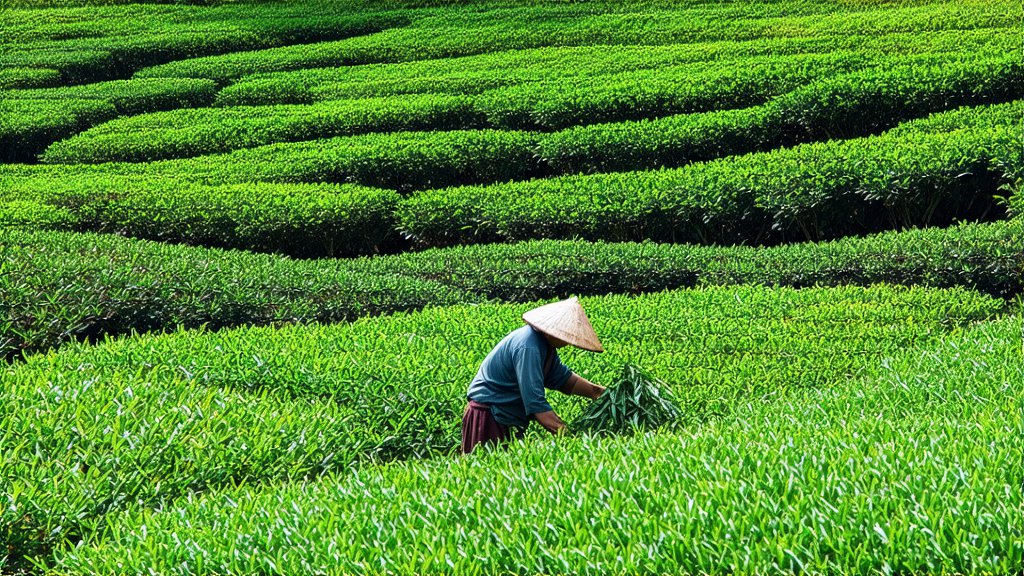
China, the cradle of tea culture, offers a rich tapestry of tea varieties that have captivated palates and minds across the globe. Among these, Keemun Black Tea stands as a testament to China's profound tea-making heritage. This exquisite variety, hailing from the picturesque landscapes of Qimen County in Anhui Province, has earned its place as one of the most revered black teas in the world. Its history, types, production process, and tasting methods are all integral to understanding its global appeal.
Historical Background
Keemun Black Tea, also known as Qimen Black Tea, traces its origins back to the Tang Dynasty (618–907 AD). However, it wasn't until the late 19th century that it gained significant international recognition. The name "Keemun" is derived from the transliteration of Qimen County, where this tea was first produced. During this period, British merchants introduced Keemun to the Western markets, quickly establishing it as a preferred choice due to its unique flavor profile and aromatic qualities.
Varieties of Keemun Black Tea
Keemun Black Tea comes in several distinct varieties, each offering a unique taste and aromatic experience:
-
Huo Shan Xiao Shi Pian: Often referred to as "Small Slab," this type features tightly rolled leaves that resemble small slabs. It is known for its robust flavor and smooth texture.
-
Gong Mei Huo Shan Guan: Translated as "Top Quality Keemun," this variety is considered the highest grade. Its leaves are meticulously handpicked and processed to yield a delicate, floral fragrance.
-
Jing Jun Mei: Also known as "Broken Tips," this type consists of smaller leaf particles and is often used for blending purposes. Despite its fragmented appearance, it retains a rich, full-bodied flavor.
-
Meng Ding Gong Fu: While primarily a green tea, Meng Ding can also be processed into a black tea variant, showcasing a slightly different but equally delightful flavor profile.
Production Process
The production of Keemun Black Tea is an art form that involves several intricate steps:
-
Withering: Freshly plucked tea leaves are spread out in a well-ventilated area to reduce moisture content. This step helps to soften the leaves and initiate the fermentation process.
-
Rolling: The withered leaves are then rolled either by hand or using mechanical rollers. This step releases the essential oils and juices within the leaves, contributing to the tea's distinctive flavor and aroma.
-
Fermentation: Rolled leaves are left to ferment in a controlled environment. This oxidation process turns the green leaves brown and develops the characteristic flavors associated with black tea.
-
Drying: After fermentation, the leaves undergo a final drying phase to remove any remaining moisture. This step ensures the tea's longevity and stability.
-
Sorting and Grading: The dried tea leaves are sorted based on size, shape, and quality. High-grade leaves are often handpicked to ensure only the finest leaves make it to the final product.
Tasting Methods
To fully appreciate the nuances of Keemun Black Tea, proper tasting techniques are essential:
-
Warming the Cup: Begin by warming your teapot and cups with hot water to enhance the tea's aroma. Discard the warming water before adding the tea leaves.
-
Measuring Leaves: Use approximately 2-3 grams of loose tea per 200 ml of water. Adjust according to personal preference for a stronger or milder brew.
-
Steeping Time: Add boiling water (around 95-100°C) to the tea leaves and let them steep for about 3-5 minutes. Avoid oversteeping as it may result in a bitter taste.
-
Aroma Appreciation: Before taking your first sip, take a moment to inhale the aroma rising from your cup. Keemun Black Tea is renowned for its sweet, fruity scent with hints of floral notes.
-
Tasting: Take small sips to allow the complex flavors to unfold on your palate. Note the initial sweetness, followed by a smooth, lingering finish. Pay attention to the tea’s body and mouthfeel, which should be both full-bodied and velvety.
Cultural Significance
Beyond its culinary virtues, Keemun Black Tea holds cultural significance in Chinese society. It is often featured in traditional tea ceremonies and is considered a symbol of hospitality and respect. Offering a cup of Keemun during important gatherings signifies high regard for the guests.
In conclusion, Keemun Black Tea is more than just a beverage; it is a cultural treasure that encapsulates centuries of tradition, craftsmanship, and history. From its ancient roots in Qimen County to its current status as a global favorite, Keemun continues to enchant tea enthusiasts around the world with its unparalleled quality and charm. Whether you are a seasoned connoisseur or a curious newcomer, exploring the vast world of tea, Keemun Black Tea promises an unforgettable journey through flavor and aroma.